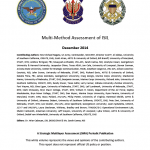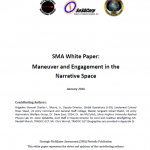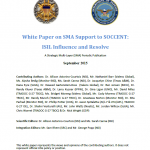
Early in 2014, as it became clear that the rise of the so-called “Islamic State” was becoming a significant menace to Regional Stability and US Interests, SOCCENT began a dialogue with Dr. Hriar Cabayan and his co-workers regarding a topic that has been at the core of the struggle against Violent Extremism. That question has been, and remains today, a perplexing one for those of us from Western cultures and societies: “What precisely are we contesting, and what is it that fuels the adversary’s power?” The contents of this paper reflect some of the work that Dr. Cabayan and his colleagues are doing to help us understand and comprehend this “intangible power” across a unique enterprise of academicians, scientists, policy intellectuals, current and former Foreign Service, military, and intelligence professionals. Most importantly, their efforts to improve our comprehension will enable us to adjust our efforts, our operations, our investments, and our risk-‐calculations to more effectively contest it and the organization that wields it. I am grateful for their tireless work in this regard, and I commend it to the reader.
Read more →



